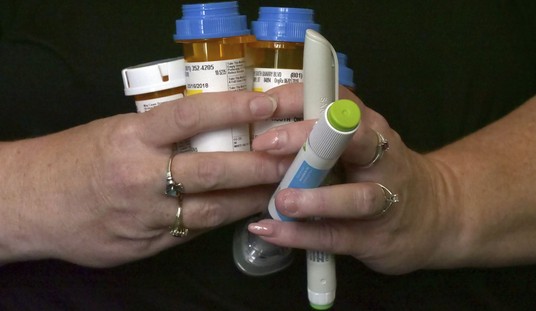Severe weather season is upon us, and there have already been major tornado outbreaks. Nearly a dozen twisters ripped through Dallas on April 3; dozens more were spawned in an April 15 outbreak stretching from Oklahoma to Nebraska that sent an EF3 tornado through Wichita, Kansas.
Preparation can be the key to surviving potentially deadly sudden weather, whether it be a severe thunderstorm, a tornado, or a flash flood. National Weather Service meteorologist Drew Albert tells PJ Media:
The first thing is you want to avoid being in that situation to begin with. It’s all about personal responsibility.
Before heading out for a day at the lake or the golf course — where a lot of weather-related fatalities occur — people simply need to check the weather to make sure a storm isn’t brewing.
However, a thunderstorm can pop up seemingly without warning — especially in the plains area — so people should bring along a means of checking the weather. Smartphones are an excellent option; most weather apps will even send out notices of impending severe weather. Not everyone has the ability to own one, of course, but fortunately you have other options, per Albert:
Have a small portable radio; they make portable weather radios that will fit in a golf bag.
Additionally, he says people need to be aware of the skies. This habit is second nature for lifelong plains residents, but not everyone knows what signs to look for up above:
Look for building cumulus clouds — as they get more vertical, it’s time to think about packing it in.
Cumulus clouds (the big puffy ones) will start to rise in height as warm air is drawn skyward. These updrafts, which pull warm, moist air — and thus energy — into the sky, are one of the main precursors of a severe storm (however, be aware that even typical thunderstorms can also spawn torrential downpours and lightning).
Albert also says to listen carefully for thunder, which can be heard from miles away before a storm closes in: if you can hear thunder, you are in range to be hit by lightning. As many as 2,000 deaths are attributed to lightning each year, and significantly more injuries. Lightning can strike out of what appears to be a clear sky before a storm gets completely underway.
Another sign: watch for sudden temperature drops, which represent outflow from the circulation within the storm. This is a bad sign, says Albert:
If you’re getting to the point where you’re getting outflow from the storm and the temperature is dropping, you should be getting to shelter.
The danger is not over when the storm has passed. Witness the unstable devastation of Joplin, Missouri, almost a year ago. According to the Federal Emergency Management Agency (FEMA), it’s a good idea to have a basic “bug-out bag” for the aftermath. Keep in mind that in a natural disaster, there’s a good chance basic services such as electricity and even water will be out. FEMA recommends you have:
— Water, one gallon of water per person per day for drinking and sanitation
— Food, at least a three-day supply of non-perishable food
— Battery-powered radio and a NOAA Weather Radio with tone alert, and extra batteries for both
— Flashlight and extra batteries
— First aid kit
— Whistle to signal for help
— Infant formula and diapers, if you have an infant
— Moist towelettes, garbage bags, and plastic ties for personal sanitation
— Dust mask or cotton t-shirt to help filter the air
— Plastic sheeting and duct tape to shelter-in-place
— Wrench or pliers to turn off utilities
— Can opener for food (if kit contains canned food)
For cold climates or winter, you should add one complete change of warm clothing and shoes per person, including:
— A jacket or coat
— Long pants
— A long sleeve shirt
— Sturdy shoes
— A hat and gloves
— A sleeping bag or warm blanket for each person
I will add that given the looting that almost invariably occurs in major cities following a disaster (see Hurricane Katrina), a gun is at least worth thinking about.
It’s always best to be prepared for bad weather and the disruptions it can bring. As Joplin proved, even if you don’t need the kit, someone else may need your help, and a few simple items can make all the difference.
Related:









Join the conversation as a VIP Member